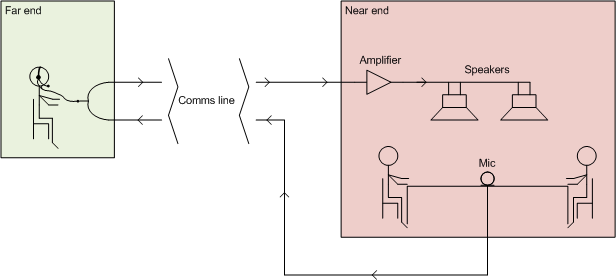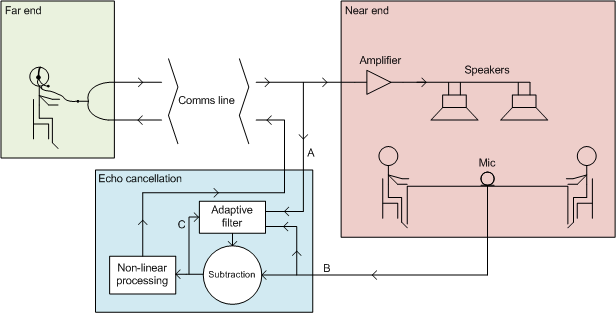It is quite common to hear an echo when communicating via microphones and speakers, in a set up similar to the one shown below. When the person at the far end speaks, their voice is transmitted to the speakers in the room at the near end. The microphone on the table not only picks up what the people in the room say in reply, but also the sound of the person at the far end as it emerges from the speakers. This means that the person at the far end not only hears what the people at the near end say, but also a delayed echo of what they themselves have just said. The effect can be very distracting. It is important that the echo is eliminated to ensure that the quality of the sound in the conference is kept to an acceptable level.

An echo cancellation system can be introduced into the design to eliminate the echo effect. It will ensure that the person at the far end can only hear the sound made by the people at the near end in their headphones, not the sound of the people at the near end plus the echoed sound of themselves from the far end.
In order to send only the sound of the people at the near end down the line to the person at the far end, the sound of the person at the far end, as it is heard in the room, must be removed (or subtracted) from the signal. The problem is, the part of the signal from the near end containing the signal from the far end is no longer identical to the original and cannot be easily recognized. The characteristics of the room have affected it. The echo cancellation system must determine how the room at the near end affects the signal from the far end in order to make it recognizable. It can then be cancelled out.
The diagram below shows the same scenario with the addition of an echo cancellation system.

The echo cancellation process is as follows:
For more detailed information on how echo cancellation works, see http://en.wikipedia.org/wiki/Echo_cancellation.